Deliverables
(PAPERS below)
| Deliverable 1.12 Performance report final | |
|---|---|
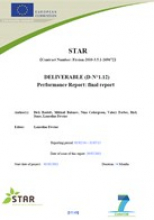 | This Performance report is the final evaluation of the STAR project The first section is the “Final Evaluation Report” produced by the External Advisory Board (EAB) of STAR. The second section is the review of the Performance Indicators initially proposed in the STAR Deliverable of Work (DoW). Overall, STAR has achieved all its initial objectives and the project has made considerable progress in enhancing the long term stability and sustainability of radioecology in Europe. The collaborative work and joint research conducted has strengthened radioecology and integration was attained much further than was imagined at the beginning of the project. The EAB evaluation of STAR reflects this success - they commented in their report that “Overall, the EAB is very positive about the accomplishments and European added value of STAR. The EAB is certain that STAR has increased interest and awareness about radioecological issues in the European Community and beyond strengthening future scientific excellence and societal relevance on this important topic.” |
| Deliverable 2.1 Draft Strategic Research Agenda | |
|---|---|
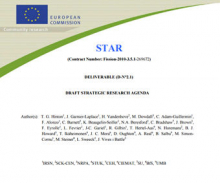 | To address emerging issues in radioecology within Europe, eight organisations signed a Memorandum of Understanding (MoU) that formed the European Radioecology ALLIANCE . The MoU states the intentions of ALLIANCE members to integrate a portion of their respective R&D efforts into a trans-national programme that will enhance and sustain European radioecological competences and experimental infrastructures. The ALLIANCE members recognise that their shared radioecological research can be enhanced by efficiently pooling resources among its partner organizations and prioritising group efforts along common themes of mutual interest. A major step in this prioritisation process is to develop a Strategic Research Agenda (SRA). An EC-funded Network of Excellence in Radioecology, called STAR (Strategy for Allied Radioecology), was formed to, among other tasks, develop the SRA. This manuscript is the first published draft of the SRA. |
| Deliverable 2.2 Infrastructure: databases, sample banks, methods and facilities of radioecological research | |
|---|---|
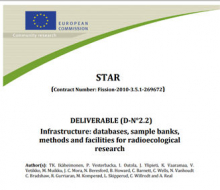 | STAR deliverable 2.2 deals with the objective, to produce an inventory of infrastructure including databases and sample archives. The task will help ensure effective collaboration and integration between the partners, with the possibility to enlarge to other radioecology institutes in Europe and worldwide. |
| Deliverable 2.3: Observatories for Radioecological Research - description | |
|---|---|
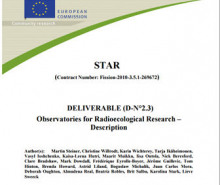 | This STAR deliverable 2.3 looks at the selected radioecological observatories sites 1) Chernobyl Exclusion Zone (Ukraine) and 2) Upper Silesian Coal Basin (Poland) |
| Deliverable 2.4: Virtual Laboratory description | |
|---|---|
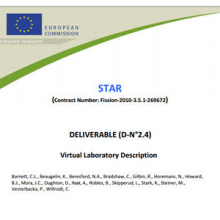 | STAR deliverable 2.4 looks at the virtual laboratory which will be developed from information collated as part of Deliverable 2.2 (joint infrastructure description) and will have a dedicated area on the Radioecology Exchange website. It will focus on providing information related to each of the following four categories: 1) Methodological: descriptions of analytical methods (including problems likely to be encountered); video clips of methods; protocols and manuals used in WP4/5; 2) Informative: fact and datasheets, databases, sample archives and examples of sources of environmental dose 3) How to use models: CROM and ERICA 4) Training: lectures and videos and links to other websites related to training activities |
| Deliverable 2.5 Strategic Research Agenda for Radioecology - an updated version with stakeholder input | |
|---|---|
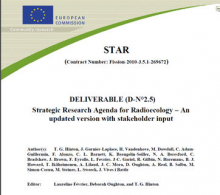 | In November 2012 a workshop was held in Paris to discuss the first version of the Strategic Research Agenda (SRA) for radioecology with key stakeholders. Supported by the European Radioecology ALLIANCE, a web-consultation was also organised to collect comments on the SRA. The SRA was subsequently amended taking into account comments received and the responses to comments are documented in the current SRA version SRA version. |
| Deliverable 2.6 Final plan for integration and the long term SRA | |
|---|---|
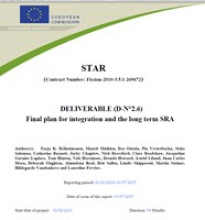 | STAR deliverable 2.6 provides information on the major achievements in joint programming and integration, how they have been accomplished under the STAR NoE and how they promote the ultimate goal of setting up management structures, procedures, funding plans and legal structures, as well as joint use and development of new infrastructures. The final plan for integration accounts for the new European landscape: some of the issues regarding integration have already been taken in charge by projects (e.g. COMET) or the European platform (the ALLIANCE). This new landscape is presented in section 4. Above all the report describes the way forward, in other words how the work started in the STAR NoE will continue after STAR. |
| Deliverable 3.1: Generic model for combined Tier-1 assessments for humans and wildlife | |
|---|---|
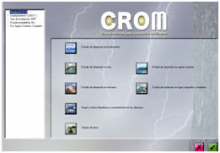 | In STAR deliverable 3.1 despite some conceptual differences, the assessment models for both humans and wildlife require contamination levels of environmental media such as air, freshwater, soil, etc. as inputs. Currently regulators and other end-users have to use different tools for human and environmental assessment. These tools may not even use the same sub-model to estimate media activity concentrations. The commonality in required inputs was here used in a pragmatic approach to design a first step combined human-environment assessment model. Based in state-of-the-art models for human exposure assessment the combined model provides the first step of iteratively proceeding towards process-oriented modelling. Starting from a known (either measured or calculated) contamination of environmental media (air, water, soil, etc.), the contamination of non-human species is generally calculated using empirical parameters such as whole-organism concentration ratios (CR) and sediment-water distribution coefficients (Kd) |
| Deliverable 3.2: Evaluation of extrapolation approaches to provide radioecological parameters | |
|---|---|
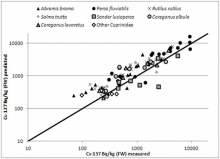 | The assessment of the exposure of humans and wildlife to ionising radiation for planned, existing and emergency exposure scenarios requires us to make predictions of the transfer of a wide range of radionuclides to a diversity of species and food products. We are unlikely to ever have sufficiently robust measurement data to populate all of the potential parameters required. Therefore, we need robust extrapolation approaches which allow us to make best use of our available knowledge. In the STAR deliverable 3.2 we have reviewed, developed, tested and validated various extrapolation approaches. |
| Deliverable 3.3: International wildlife dosimetry workshop | |
|---|---|
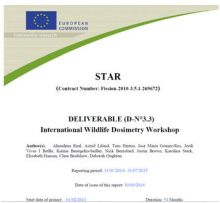 | STAR deliverable 3.3 summarises the main issues related with the International Wildlife Dosimetry Workshop, organized by STAR in June 2014. All the information from the workshop: the agenda, the presentations of all the speakers and the minutes of the discussion sessions are available here. The workshop addressed a wide spectrum of questions related to the ionising radiation dose estimation in animals and plants, involving world leading experts in each of the subjects treated. There were 30 participants from 12 countries (Belgium, Canada, USA, Spain, France, Germany, Japan, Norway, Portugal, United Kingdom, Russia and Sweden). |
| Deliverable 3.4 Report on feasibility of improving radioecological models using a process-oriented approach | |
|---|---|
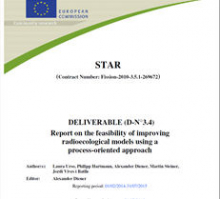 | STAR deliverable 3.4 summarises investigations of process-orientated modelling to reduce uncertainties of empirical parameters using 4 examples for radioecological scenarios. |
| Deliverable 3.5 Report on fluxes and trophic transfer of radiocaesium in marine ecosystem | ||
|---|---|---|
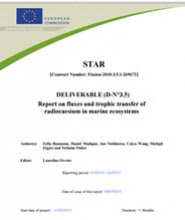 | STAR deliverable 3.5 reports on experiments conducted addressing the extent to which contaminated sediments can serve as a source of radioactive caesium for benthic food webs. It also describes radiocaesium measurements of biota collected from several research cruises off Fukushima, focusing on benthic organisms, but also contrasting them with some pelagic organisms at the same sites. Experiments have generated trophic uptake and elimination parameters for Cs in key benthic animals. Experimental results show (1) that Cs can desorb from contaminated sediments at rates influenced by bioturbation, (2) sediment can be a source of Cs for marine benthic fauna, and (3) efficient assimilation of Cs from preycan lead to its build-up in benthic food chains. | |
| Deliverable 4.1 Overview of existing approaches, methods and tools developed in ecotoxicology for assessing exposures, effects and risks in a mixed contaminant context |
|---|
| DELIVERABLE 4.2 Tools for assessing availability and exposure in a multiple contaminant context: the scientific basis and associated tools to assess radionuclide availability and exposure under multiple contaminant conditions |
|---|
| DELIVERABLE 4.3 Tools for mechanistic understanding of induced effects for mixed exposure |
|---|
| DELIVERABLE 4.4 Critical evaluation of Robustness of Protection Levels in a Multiple Contaminant Context |
|---|
| Deliverable 5.1: Plans for laboratory radiation effects studies | |
|---|---|
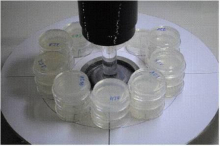 | This is the first deliverable from STAR work package 5 dedicated to “ecologically-relevant low doses effects to non-human species”. Readers will find herein a description of the basic concepts, needs, data generation and mathematical treatment for the approaches STAR will implement to understand, quantify and model effects of ionising radiation in non-human species for chronic low dose rates exposure situations. More Photo shows pilot study on C. elegans (nematodes) with experimental units around the liquid irradiation source. (J.M. Bonzom, IRSN) |
| Deliverable 5.2: Life history traits, radiosensitivity and population modeling: methods to extrapolate from individual endpoints to population dynamics | |
|---|---|
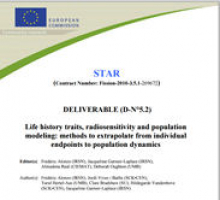 | The STAR deliverable 5.2 describes in details the basic concepts, needs and data treatment for the population modeling approaches that have been implemented under WP-5 dedicated to “ecologicallyrelevant low doses effects to non-human species” as part of Task 5.1 devoted to the derivation of population-level protection criteria. Two modeling approaches are presented for extrapolating radiation dose effects from individuals to populations of non-human biota. The first approach, developed as part of the STAR programme, is inspired from method which are increasingly used in ecotoxicology to address population effects of chemical contaminants.The second approach evolves from a model specifically developed to address radiation effects at the population level in the European lobster and generalised to some mammalian species during the IAEA programme EMRAS II from 2009 to 2011 |
| Deliverable 5.3 Radiation Quality: studying sub-cellular modes of action using biomarkers and "omics" tools | |
|---|---|
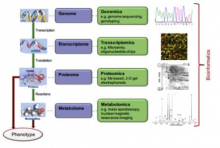 | The STAR deliverable 5.3 addresses some of the issues associated with the impact of radiation quality on biological effects in non-human organisms. It is a summary of work in progress to (ultimately) test the overarching hypotheses that RBEs and radiation weighting factors for ecologically relevant endpoints will be different to those for human cancer risks. The deliverable starts with a review of the state-of-the-art in RBE and radiation quality, including the ways in which biomarker and “omic” approaches can help in understanding MoA. Section 3 addresses experimental design issues and section 4 presents the results of ongoing studies. Overall conclusions and future work is given in section 5. Picture copyright of Turid Hertel-Aas. |
| Deliverable 5.4: Understanding the “metabolic” mode of actions of two different types of radiation using biokinetics/DEB-tox models | |
|---|---|
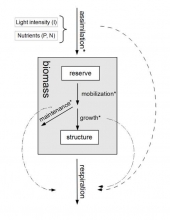 | In STAR deliverable 5.4, understanding how toxic contaminants affect wildlife species at various levels of biological organisation (sub-cellular, histological, physiological, organism, population levels) is a major research goal in both ecotoxicology and radioecology. A mechanistic understanding of the links between the different observed perturbations is necessary to predict consequences for survival, growth and reproduction which are critical for population dynamics. However, time scales at which such links are established in the laboratory are rarely relevant for natural populations. Multigenerational exposures are much more representative of the real context of field populations for which exposure can last for durations which largely exceed individual longevity and involve exposure of many successive generations. In this context, STAR conducted both experimental and modelling studies under controlled conditions in three model species: two animals: the nematode Caenorhabditis elegans and the cladoceran microcrustacean Daphnia magna and one plant the macrophyte Lemna minor. Schematic representation of the simple DEB-tox model for L. minor. |
| Deliverable 6.1: Education and training in Radioecology: Supply and Demand Stakeholder Workshops | |
|---|---|
The first deliverable from STAR work package 6 is now available. In 2011, two stakeholder workshops were arranged to give insight into the recruitment needs. The first workshop in Helsinki concentrated on the demand for E&T in radioecology, and the second in Oslo on supply. A total of 47 stakeholders from outside the STAR network participated, providing invaluable input and advice on the education and training work planned in STAR. More
Photo shows discussions during workshops. (T. Hinton, IRSN) | |
| Deliverable 6.2: The Radioecology Education and Training Platform | |
|---|---|
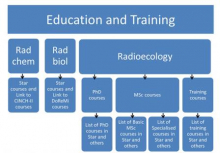 | The Radioecology Education and Training Platform (E&T platform) is a website focal point for students and professionals interested in radioecology. The platform presents an overview of education and training course modules within radioecology/environmental radioactivity presently offered by the STAR consortium. Information on course curriculums and learning outcomes are provided, with recommended pathways to obtained academic merited education (MSc, PhD). The Radioecology E&T platform also provides links to other E&T platforms, such as those within Radiochemistry, Radiobiology and Radiation Protection. This is an important outreach mechanism for the Radioecology E&T platform, as – for example – many of the basic course modules within radioecology are also relevant for other nuclear science students, and vice versa. The E&T platform is described fully in deliverable 6.2 The picture shows how the planned Education and Training Platform will look. |
| Deliverable 6.3: Test-run of course modules | |
|---|---|
 | A sustainable nuclear energy programme requires a trained and competent workforce. To achieve this vibrant and sustainable skill base in radioecology and a long-term training and education within the nuclear sciences is required. The STAR deliverable 6.3 provides information on the implementation and test runs of course modules within radioecology, describing the content of the courses, experts teaching the courses, number of students and trainees participating, as well as the development of the courses held within STAR. |
| Deliverable 6.4: Strategic plan for securing long term sustainability for education and training in radioecology | |
|---|---|
 | Studies undertaken in the last decade by European and international organizations, have shown that regarding the nuclear sciences (including radioecology) there is a decreased student interest, decreased course numbers and ageing faculty members and facilities. In this STAR deliverable 6.4 the E&T platform in radioecology developed by STAR is presented (Section 2). The E&T platform is part of “The Radioecology Exchange”, a web resource that is intended to become a ‘gateway’ for information related to European (and wider) radioecological research. Section 2 also describes the importance of forums, such as websites, conferences, meetings, social media, to stimulate students and facilitate their interaction with experts. |
| Deliverable 7.2 Dissemination plan | |
|---|---|
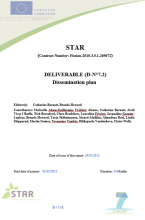 | This dissemination plan is intended to be a long-term plan for dissemination of radioecological activities and outputs within a sustainable framework of ALLIANCE co-operation building based on experience within STAR. The deliverable therefore briefly describes the dissemination activities that have been carried out in STAR, the progression via COMET and how ongoing plans are proceedings to ensure that long term dissemination of the ALLIANCE activities can be sustained. Dissemination activities in STAR have been carried out via a range of activities, the most important of which has been the development of the Radioecology Exchange. Prior to STAR, there was no single web site giving freely available, good quality information and recent news on environmental radioactivity. The creation of www.radioecology-exchange.org as the gateway to accessing on-line radioecological resources and news items, is a major step forward in providing a wide range of information on environmental radioactivity in a single web site. Analysis of a questionnaire distributed at the STAR dissemination event showed that feedback from participants was good and most people liked the site and intended to use the site in future. Recent agreements between STAR, COMET and the ALLIANCE has ensured that much of the information collated on the site will be held in a sustainable format and manner providing a valuable future resource to support radioecology. |
| Deliverable 7.3 Data related activities in STAR | |
|---|---|
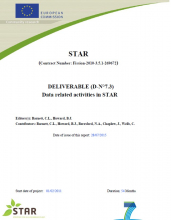 | This deliverable summarises the activities conducted during the STAR project related to data. As the majority of the information is available from the Radioecology Exchange or the STAR project website this deliverable is deliberately brief and provides hyperlinks to the relevant information. The transparency and provenance of data derived and collated has been enhanced and made more accessible to the wider community during STAR. A STAR member’s data holdings wiki has been implemented from which information collated was used to populate the radioecology data catalogue. The catalogue currently provides access to radioecology data held by partners and further data produced during STAR will be added to the catalogue as it is published. SomeINSPIRE compliant data has also been made available via the NERC Environmental Information Data Centre (EIDC); more will be made available in the near future. STAR has provided guidance on how to curate and make data available at meetings and at an international “making data available” STAR workshop. Workshops have been held on radioecological data; two on Kd, and one on ‘making data available’. The outputs from these workshops are accessible on the STAR and COMET Workshop. STAR has pioneered mechanisms to improve the transparency of radioecological data. The approaches developed within STAR are leading the community at international level via the interaction with IAEA MODARIA programme where STAR partners chair four of the working groups. Examples of enhancing the availability and transparency of some major international data sets are being taken forward in co-operation with the IAEA MODARIA programme; e.g. soil and freshwater partition coefficients (Kd), biological half-life values for wildlife and animal product transfer parameter values. Improving current practices of data curation, availability and transparency makes national and international data sets more accessible and greatly facilitates more frequent updates of key databases such as radioecological parameter values. |
Papers
| 2019 | |
| Bradshaw C., Meseh, D.A., Alasawi, H., Qiang, M., Snoeijs-Leijonmalm, P., Nascimento, F.J.A. (2019). Joint effects of gamma radiation and cadmium on subcellular-, individual- and population-level endpoints of the green microalga Raphidocelis subcapitata. Aquat. Tox. 2011, 217-226. | |
| Beresford, N.A., Horemans, N., Copplestone, D., Raines, K.E., Orizaola, G., Wood, M.D., Laanen, P., Whitehead, H.C., Burrows, J.E., Tinsley, M.C., Smith, J.T., Bonzom, J.-M., Gagnaire, B., Adam-Guillermin, C., Gashchak, S., Jha, A.N., de Menezes, A., Willey, N., Spurgeon, D. (2019). Towards solving a scientific controversy – The effects of ionising radiation on the environment. J. Environ. Radioact. (In Press). | |
| 2018 | |
| Boyer, P., Wells, C., Howard, B.J. (2018). Extended Kd distributions for freshwater environment. J. Environ. Radioact. 192, 128-142. | |
Vandenhove, H., Bradshaw, C., Beresford, N.A., Vives i Batlle, J., Real, A., Garnier-Laplace, J. (2018). ALLIANCE perspectives on integration of humans and the environment into the system of radiological protection. Annals of the ICRP. Article first published online: April 19, 2018. | |
| 2017 | |
| Van Hoeck, A., Horemans, N., Nauts, R., Van Hees, M., Vandenhove, H., Blust, R., (2017). Lemna minor plants chronically exposed to ionising radiation: RNA-seq analysis indicates a dose rate dependent shift from acclimation to survival strategies. Plant Sci. 257, 84-95. | |
| Howard, B.J., Wells, C., Barnett, C.L., Howard, D.C. (2017). Improving the quantity, quality and transparency of data used to derive radionuclide transfer parameters for animal products. 2. Cow milk. J. Environ. Radioact., 167, 254-268 (OPEN ACCESS). | |
| 2016 | |
| Alonzo, F., Hertel-Aas, T., Real, A., Lance, E., Garcia-Sanchez, L., Bradshaw, C., Vives i Batlle, J., Oughton, D., Garnier-Leplace, J. (2016). Population modelling to compare chronic external radiotoxicity between individual and population endpoints in four taxonomic groups. J. Environ. Radioact., 152, 46-59. | |
| Beresford, N.A., Wood, M.D., Vives I Batlle, J., Yankovich, T.L., Bradshaw, C., Willey, N. (2016). Making the most of what we have: application of extrapolation approaches in radioecological wildlife transfer models. J. Environ. Radioact., 151, 373-386. (OPEN ACCESS) | |
| Horemans, N., Van Hees,M., Saenen E., Van Hoeck, A., , Smolders, V., Blust, R., Vandenhove, H. (2016). Influence of nutrient medium composition on uranium toxicity and choice of the most sensitive growth related endpoint in Lemna minor. J. Environ. Radioact., 151, 427-437. | |
| Howard, B.J., Wells, C., Barnett, C.L. (2016). Improving the quantity, quality and transparency of data used to derive radionuclide transfer parameters for animal products. 1. Goat milk. J. Environ. Radioact., 154, 34-42. | |
| Nascimento, F.J., Bradshaw, C. (2016). Direct and indirect effects of ionizing radiation on grazer–phytoplankton interactions. J. Environ. Radioact., 155-156, 63-70. (OPEN ACCESS) | |
| Song, Y., Salbu, B., Teien, H-C., Evensen, O., Lind, O.l., Rosseland, B.O., Tollefsen, K.E., (2016). Hepatic transcriptional responses in Atlantic salmon (Salmo salar) exposed to gamma radiation and depleted uranium singly and in combination. Sci. Tot. Environ., 562, 270-279. | |
| Wang, C., Baumann, Z., Madigan, D.J., Fisher, N.S., (2016). Contaminated marine sediments as a source of cesium radioisotopes for benthic fauna near Fukushima. Environ. Sci. Tech. 50, 10448-10455. | |
| 2015 | |
| Biermans, G., Horemans, N., Vanhoudt, N., Vandenhove, H., Saenena, E.,van Hees, M., Wannijn, J., Vangronsveld, J., Ann Cuypers, A. (2015). Biological effects of α-radiation exposure by 241Am in Arabidopsis thaliana seedlings are determined both by dose rate and 241Am distribution. J. Environ. Radioact., 149, 51–63. | |
| Biermans, G., Horemans, N., Vanhoudt, N., Vandenhove, H., Saenen, E., Van Hees, M., Wannijn, J., Vangronsveld, J., Cuypers, A., (2015). Arabidopsis thaliana seedlings show an age-dependent response on growth and DNA repair after exposure to chronic γ-radiation. Environ. Exp. Bot. 109, 122-130 | |
| Hinton T.G, Byrne M.E., Webster S., Beasley J.C. 2015. Quantifying the spatial and temporal variation in dose from external exposure to radiation: a new tool for use on free-ranging wildlife. J. Environ. Radioact., 145: 58-65. | |
| Horemans, N., Van Hees,M., Van Hoeck, A., Saenen E., De Meutter, T., Nauts,R., Blust, R., Vandenhove, H. (2015). Uranium and cadmium provoke different oxidative stress responses in Lemna minor L. Plant Biology, 17, 91-100. | |
| Jaeschke, B.C., Lind, O.C., Bradshaw, C., Salbu, B. (2015). Retention of radioactive particles and associated effects in the filter-feeding marine mollusc Mytilus edulis. Sci. Tot. Environ. 502, 1-7. | |
| Lofts, S., Fevrier, L., Horemans, N., Gilbin, R., Bruggeman, C., Vandenhove, H. (2015). Assessment of co-contaminant effects on uranium and thorium speciation in freshwater using geochemical modelling. J. Environ. Radioact., 149, 99-109 | |
| Margerit A., Lecomte-Pradines C., Svendsen C., Frelon S., Gomez E., Gilbin R. (2015). Nested interactions in the combined toxicity of uranium and cadmium to the nematode Caenorhabditis elegans . Ecotoxicol. Environ. Safety, 118, 139–148. | |
| Nascimento, F.J., Svendsen, C., Bradshaw, C. (2015). Combined effects from γ radiation and fluoranthene exposure on carbon transfer from Phytoplankton to Zooplankton. Environ. Sci. Technol. 49, 10624-10631. | |
| Nascimento, F.J., Svendsen, C., Bradshaw, C. (2015). Joint toxicity of cadmium and ionizing radiation on zooplankton carbon incorporation, growth and mobility. Environ. Sci. Technol. 50, 1527-1535. | |
| Parisot F., Bourdineau J.-P., Plaire D., Adam-Guillermin C., Alonzo F. (2015). DNA alterations and effects on growth and reproduction in Daphnia magna during chronic exposure to gamma radiation over three successive generations. Aquat. Toxicol., 163: 27–36. | |
| Van Hoeck, A., Horemans, N., Van Hees, M., Nauts, R., Knapen, D., Vandenhove, H., Blust, R. (2015). Characterizing dose response relationships: Chronic gamma radiation in Lemna minor induces oxidative stress and altered polyploidy level. J. Environ. Radioact., 150, 195-202 | |
| Van Hoeck, A., Horemans, N., Van Hees, M., Nauts, R., Knapen, D., Vandenhove, H., Blust, R. (2015). β-Radiation Stress Responses on Growth and Antioxidative Defense System in Plants: A Study with Strontium-90 in Lemna minor. Int. J. Mol. Sci., 16(7), 15309-15327; doi:10.3390/ijms160715309 [OPEN ACCESS] | |
| Van Hoeck, A., Horemans, N., Van Hees, M., Nauts, R., Knapen, D., Vandenhove, H., Blust, R. (2015). The first draft genome of the aquatic model plant Lemna minoropens the route for future stress physiology research and biotechnological applications. Biotechnology for biofuels 8, 188. [OPEN ACESS] | |
| 2014 | |
| Beresford, N.A., Wood, M.D. (2014). A new simplified allometric approach for predicting the biological half-life of radionuclides in reptiles J. Environ. Radioact., 138, 116-121. | |
| Brown, JE, Hosseini, A, Dowdall M (2014). On the application of an environmental radiological assessment system to an anthropomorphic surrogate. Int. Environ. Assess. Manag. 10 (1), 125-132. | |
| Chaplow, J. S., Beresford, N. A., Barnett, C. L. (2014). Post Chernobyl surveys of radiocaesium in soil, vegetation, wildlife and fungi in Great Britain Earth Syst. Sci. Data Discuss., 7, 693-711. | |
| Hinton, T., Brechignac, F., Howard, B.J., Liland, A., Walker, S., Yankovich, T. (2014). Environmental radioactivity: legacy sites, Chernobyl and Fukushima (Editors). J. Environ. Radioact. 131, 1-3. | |
| Song, Y., Salbu B., Teien H.-C., Heier L.S., Rosseland B.O., Tollefsen K.E. (2014). Dose-dependent hepatic transcriptional responses in Atlantic salmon (Salmo salar) exposed to sublethal doses of gamma radiation. Aquat. Toxicol. 156: 52–64. | |
| Song, Y., Salbu B., Teien H.-C., Heier L.S., Rosseland B.O., Høgåsen, T., Tollefsen K.E. (2014). Hepatic transcriptomic profiling reveals early toxicological mechanisms of uranium in Atlantic salmon (Salmo salar). BCM genomics, 15 (1): 694. | |
| Song, Y., Salbu B., Teien H.-C., Heier L.S., Rosseland B.O., Høgåsen, T., Tollefsen K.E. (2014). Global transcriptional analysis of short-term hepatic stress responses in Atlantic salmon (Salmo salar) exposed to depleted uranium. Genomics Data 2, 340-241. | |
| Vanhoudt, N., Horemans, N., Wannijn, J., Nauts, R., Van Hees, M., Vandenhove, H. (2014). Primary stress responses in Arabidopsis thaliana exposed to gamma radiation. J. Environ. Radioact. 129: 1-6. | |
| 2013 | |
| Beresford, N.A., Vives i Batlle, J. (2013). Estimating the biological half-life for radionuclides in homoeothermic vertebrates: a simplified allometric approach. Radiat. Environ. Biophys. 52: 505-511. | |
Beresford, N.A., Yankovich, T.L., Wood, M.D., Fesenko, S., Andersson, P., Muikku, M., Willey, N.J. (2013). A new approach to predicting environmental transfer of radionuclides to wildlife: A demonstration for freshwater fish and caesium. Sci. Tot. Environ. 463–464: 284-292. Audio presentation of the highlights from this paper | |
| Brown, J.E., Beresford, N.A., Hosseini, A. (2013). Approaches to providing missing transfer parameter values in the ERICA Tool – How well do they work? J. Environ. Radioact. 126: 399-411 | |
| Fisher, N.S., Beaugelin-Seiller, K., Hinton, T.G., Baumann, Z., Madiganc, D.J., Garnier-Laplace, J. (2013). Evaluation of radiation doses and associated risk from the Fukushima nuclear accident to marine biota and human consumers of seafood. Proceedings of the National Academy of Sciences of the United States of America: 110 (26): 10670-10675. | |
| Hinton, T.G., Garnier-Laplace, J., Vandenhove, H., Dowdall, M., Adam-Guillermin, C., Alonzo, F., Barnett, C., Beaugelin-Seiller, K., Beresford, N.A., Bradshaw, C., Brown, J., Eyrolle, F., Fevrier, L., Gariel, J.C., Gilbin, R., Hertel-Aas, T., Horemans, N., Howard, B.J., Ikaheimonen, T., Mora, C., Oughton, D., Real, A., Salbu, B., Simon-Cornu, M., Steiner, M., Sweeck, L., Vives i Batlle, J. (2013). Una invitacion para contribuir a la agenda estrategica de investigacion en radioecologia. Radioproteccion 74: 48-61. | |
Hinton, T.G., Garnier-Laplace, J., Vandenhove, H., Dowdall, M., Adam-Guillermin, C., Alonzo, F., Barnett, C., Beaugelin-Seiller, K., Beresford, N.A., Bradshaw, C., Brown, J., Eyrolle, F., Février, L., Gariel, J.-C., Gilbin, R., Hertel-Aas, T., Horemans, N., Howard, B.J., Ikäheimonen, T., Mora, J.C., Oughton, D., Real, A., Salbu, B., Simon-Cornu, M., Steiner, M., Sweeck, L., Vives i Batlle, J. (2013). An invitation to contribute to a strategic research agenda in radioecology. J. Environ. Radioact. 115: 73-82 | |
| Hosseini, A., Stenberg, K., Avila, R., Beresford, N.A., Brown, J.E., (2013). Application of the Bayesian approach for derivation of PDFs for concentration ratio values. J.Environ. Radioact. 126: 376-387 | |
Howard, B.J., Wells, C. Beresford, N.A., Copplestone, D. (2013). Exploring methods to prioritise concentration ratios when estimating weighted absorbed dose rates to terrestrial Reference Animals and Plants/ Journal of Environmental Radioactivity 126: 326-337 | |
| Howard, B.J., (2013). A new IAEA handbook quantifying the transfer of radionuclides to wildlife for assessment tools. J. Environ. Radioact. 126: 284-287 | |
| Psaltaki, M., Brown, J.E., Howard, B.J., (2013). TRS Cs CRwo-water values for the marine environment: analysis, applications and comparisons. J. Environ. Radioact. 126: 367-375 | |
| Wood, M.D., Beresford, N.A., Howard, B.J., Copplestone, D. (2013). Evaluating summarised radionuclide concentration ratio datasets for wildlife. J. Environ. Radioact. 126: 314-325 | |
| 2012 | |
| Lance, E., Alonzo, F., Garcia-Sanchez, L., Beaugelin-Seiller, K., Garnier-Laplace, J. (2012). Modelling population-level consequences of chronic external gamma irradiation in aquatic invertebrates under laboratory conditions. Sci. Tot. Environ. 429: 206-214. | |
| Oughton, D.H. Howard, B.J. 2012. The social and ethical challenges of radiation risk management Ethics, Policy & environment 15 (1): 71-76. | |
| Vanhoudt, N., Vandenhove, H., Real, A., Bradshaw, C., Stark, K. (2012). A review of multiple stressor studies that include ionising radiation. Environ. Poll. 168: 177-192. | |
| 2011 | |
| Brown J.E., Hosseini A., Seymour C. (2011). Modelling transfer to animals accounting for trans-generational factors. Radioprotection 46 (6): S509–S514. | |
Page last updated: Apr/May 2020
